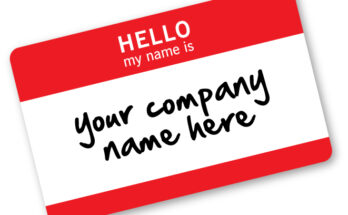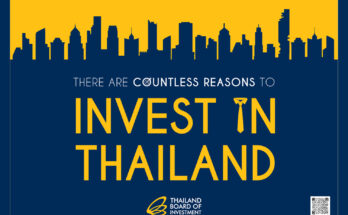Principal outcomes on trade in goods
Overall
- Upon TAFTA’s entry into force on 1 January 2005, Thailand eliminated its tariffs on some 2,934 tariff items, around 53% of all items, accounting for 78% of current Thai imports from Australia. Of these, only 206 items were previously duty free.
- A further 41% of Thai tariffs were phased to zero in 2010. These items cover 17% of current trade.
- All remaining tariffs, including tariff rate quotas, will phase to zero in 2015 or 2020, with the exception of skim milk powder and liquid milk and cream, for which the tariff rate quotas will be eliminated in 2025.
- For agricultural products subject to tariff rate quotas prior to 1 January 2005, Thailand has either eliminated the tariff and quota restrictions or will expand access for Australia over a transition period varying according to the product, before final elimination of the tariff rate quota.
All references to an “immediate” elimination of or reduction in tariffs mean immediately upon entry into force of the agreement (1 January 2005).
Industrials
General
- On entry into force, Thailand reduced tariffs on any industrial goods not subject to immediate elimination to a ceiling of no more than 20% (with the exception of small and medium passenger motor vehicles), before phasing to zero. Where not eliminated immediately, tariffs on a range of industrial goods identified by Australia as of specific interest were halved immediately before phasing to zero.
Automotive
- Thailand immediately eliminated tariffs on large passenger motor vehicles (engine capacity of over 3000cc) and goods vehicles, previously at 80% and 60% respectively. For other passenger motor vehicles, Thailand immediately reduced the previous 80% tariff to 30%, before phasing this down by 6% each year to zero in 2010.
- Tariffs on all automotive parts, components and accessories, previously up to 42%, were immediately reduced to a ceiling of 20%, and will be phased to zero by 2010. Tariffs on engines were immediately reduced from the previous 30% to 15%. Other tariffs previously at or below 20% were also immediately reduced and phased down accordingly.
Machinery and equipment
- Prior to 1 January 2005, Thai tariffs ranged up to 30%. Tariffs were either immediately eliminated or were phased to zero by 2010, with the exception of three tariffs covering electric power boards, which will be eliminated in 2015.
- Tariffs of 20% for electric transformers and inductors were eliminated immediately.
- Tariffs of 30% for fully-automatic washing machines and combined refrigerator-freezers were eliminated immediately.
Steel
- Thailand immediately eliminated its 1% tariff on slab steel.
- Thailand immediately halved its tariffs on flat-rolled steel products of interest to Australia, including hot-rolled coil (previous tariff of 10%), cold-rolled coil (12%) and coated steel (15%). Tariffs will then be eliminated in 2015, with the exception of most coated steel products for which the tariffs were phased to zero in 2008.
- On long products, Thailand generally reduced tariffs to zero by 2010. On a limited number of products, including structural sections and merchant bar, Thailand immediately halved tariffs, which will then be held until elimination in 2015.
- On steel articles, where Thailand’s previous tariffs were generally 20%, Thailand eliminated some tariffs immediately, with the remainder phased to zero by 2010.
Non-ferrous metals
- On unwrought copper cathode, Thailand eliminated the tariff in 2010. Prior to that Thailand bound the rate at no more than 5%, and applied a tariff of no higher than the rate applied to its ASEAN partners.
- On copper bars and pipes, with previous tariffs of 10%, Thailand either eliminated the tariff immediately or reduced it immediately to 5% and then eliminated it completely in 2007.
- On aluminium bar, sheet and foil, with previous tariffs of 10%, Thailand reduced immediately to 5% the tariff on items of specific interest and eliminated it in 2007, while remaining tariffs phased to zero in 2009. Thailand immediately eliminated its 1% tariff on unwrought aluminium.
- On unwrought lead and zinc, with previous tariffs of 10%, Thailand either eliminated the tariff immediately or reduced the tariff immediately to 5% and then eliminated it in 2007.
Pharmaceuticals
- Thailand phased current tariffs of 10% or 20% to zero in 2009. On products of specific interest, previous tariffs of 10% were halved immediately and were eliminated in 2007.
Fertilisers
- Thailand immediately eliminated previous fertiliser tariffs at 5%, and immediately halved previous tariffs of 10% before elimination in 2007.
Photographic goods
- Thailand immediately eliminated tariffs of 20% on photographic film, paper and chemicals.
Plastics
- Thailand immediately reduced tariffs of 30% on plastic articles to 20% and phased to zero in 2010. For the most significant item of current trade, miscellaneous plastic articles, not separately identified in the tariff schedule, Thailand immediately eliminated the previous 30% tariff.
- Thailand phased the tariffs of up to 20% on polymers to 5% in 2008 and to zero in 2010.
Other
- Thailand immediately eliminated the previous tariff of 10% on golf club parts.
- Thailand immediately eliminated the previous tariff of 20% on parts of seats.
- Thailand immediately eliminated the previous tariff of 20% on ferries under 1,000 tonnes, and will bind the current zero tariff on ferries of over 1,000 tonnes.
Agriculture
Meat
- Thailand phased the current 32% tariff for sheep meat to zero in 2010.
- Thailand immediately reduced the tariff on beef to 40%, down from 51%, and for beef offal to 30%, down from 33%, and will phase these rates to zero in 2020.
- Thailand will phase the current 33% tariff for pork to zero in 2020.
Dairy
- Thailand immediately eliminated the previous tariffs on infant formula (5%), lactose (up to 20%), casein and milk albumin (10%), and phased the tariffs on butter fat, milkfood, yoghurt, dairy spreads and ice cream to zero in 2010.
- It provided an immediate additional quota for Australia of 2,200 tonnes for skim milk powder and 120 tonnes for liquid milk and cream, expanding by 17% at five-yearly intervals until 2025, when all tariffs and quotas will be eliminated.
- It will phase the tariffs for butter and cheese, other milk powders and concentrates to zero in 2020.
Grains and related products
- Thailand immediately eliminated the previous tariffs on wheat (ad valorem equivalent of 12-20%), barley, rye and oats (ad valorem equivalents of up to 25%), and the tariff and tariff rate quota on rice.
- It also immediately eliminated the tariffs on unroasted malt (ad valorem equivalent of 28%) and wheat gluten (31%), and phased the tariffs on wheat flour (32.6%) and starch (31%) to zero in 2010.
Fruit and vegetables
- Thailand phased tariffs on most fresh fruit and vegetables (current rates mostly 33% or 42%) to zero in 2010. Tariffs on mandarins (42%) and grapes (33%) were immediately reduced to 30%, and will be phased to zero in 2015.
- Thailand immediately eliminated its tariffs on most tropical fruit.
- Thailand provided immediate additional quota for fresh potatoes, expanding yearly until 2020, when all tariffs and quotas will be eliminated. The current 30% tariffs for processed potatoes will be phased to zero in 2015.
- Thailand immediately reduced to 24% the previous tariffs of 30% on fruit juices and canned fruit, and phased the tariff to zero in 2010. The previous 30% tariffs on canned mixed fruit and canned pineapple were eliminated immediately.
Sugar
- Thailand provided immediate additional quota for sugar, expanding annually by 10%, with tariff and quota free access in 2020.
Wine, beer and spirits
- Thailand immediately reduced its previous 54% tariffs on wine to 40%, and will phase the tariff to zero in 2015.
- For beer and spirits, Thailand immediately reduced its previous tariffs of 60% to 30%, before phasing to zero in 2010.
Other processed foods
- Thailand immediately eliminated its previous 10% tariffs on chocolate confectionery, and phased its 30% tariff on sugar confectionery to zero in 2010.
- For bakery products, Thailand mostly phased tariffs of 25-30% to zero in 2010, with immediate elimination of tariffs on crispbread and some cereals.
Other
- Thailand immediately eliminated its previous tariffs of up to 10% on hides and skins.
- Thailand immediately eliminated its previous 1% tariff on wool and bound its tariff on cotton at zero.
Principal outcomes on services and investment
Foreign investment
- Thailand permits majority Australian ownership of mining operations (up to 60%). The previous limit was 49.9%.
- Thailand permits Australian companies which manufacture goods in Thailand to provide distribution services in relation to those goods without limitation of Australian equity (i.e. up to 100%). The previous limit was 49.9%.
- Thailand permits up to 100% Australian ownership of companies providing certain construction services.[1] The current limit is 49.9%.
- Thailand permits 100% Australian ownership of companies providing management consulting services through a regional operating headquarters or associated company or branch. The previous limit was 49.9%.
- Thailand permits majority Australian ownership of major restaurants or hotels (up to 60%). The previous limit was 49.9%.
- Thailand permits majority Australian ownership of tertiary education institutions specialising in science and technology (up to 60%) (provided it is located outside of Bangkok). The previous limit was 49.9%.
- Thailand permit majority Australian ownership of companies providing certain maritime cargo services (up to 60%) [2]. The current limit was 49.9%.
- The agreement incorporates provisions on investment protection which guarantee a range of rights of Australian direct investors in Thailand, including the right to transfer their funds out of Thailand at any time. The agreement gives Australian investors the right to seek impartial resolution of any disputes with the Thai government over their investments.
Temporary entry of business people
- Thailand will grant a visa and work permit for up to five years’ stay for all Australian citizens being transferred to work in Thailand within the same company (to be renewable annually) (previously one year).
- Thailand will grant a visa and work permit for up to three years’ stay for all Australian citizens entering Thailand to work on the basis of a contract with an Australian or Thai company other than their employer in Australia (to be renewable annually) (previously one year).
- Thailand will not require a work permit for Australian citizens who are business visitors conducting business meetings in Thailand for up to 15 days, and up to 90 days for APEC Travel Card Holders.
- Thailand will consider applications for visas and work permits submitted by an employer on an applicant’s behalf and advise in advance of approval and (with visa to be granted on arrival subject to identity verification).
- Thailand will permit all Australian business visitors access to the one-stop visa and work permit service (previously restricted to visitors representing or employed by major investors).
- Thailand will permit all Australians who hold work permits to participate in business meetings anywhere in Thailand, including locations not specified in their work permits (previous work permits had to be changed if any work was to be conducted in a location not specified in the permit).
- Thailand will reduce the number of documents required from Australians for work permits and renewals and work permits.




